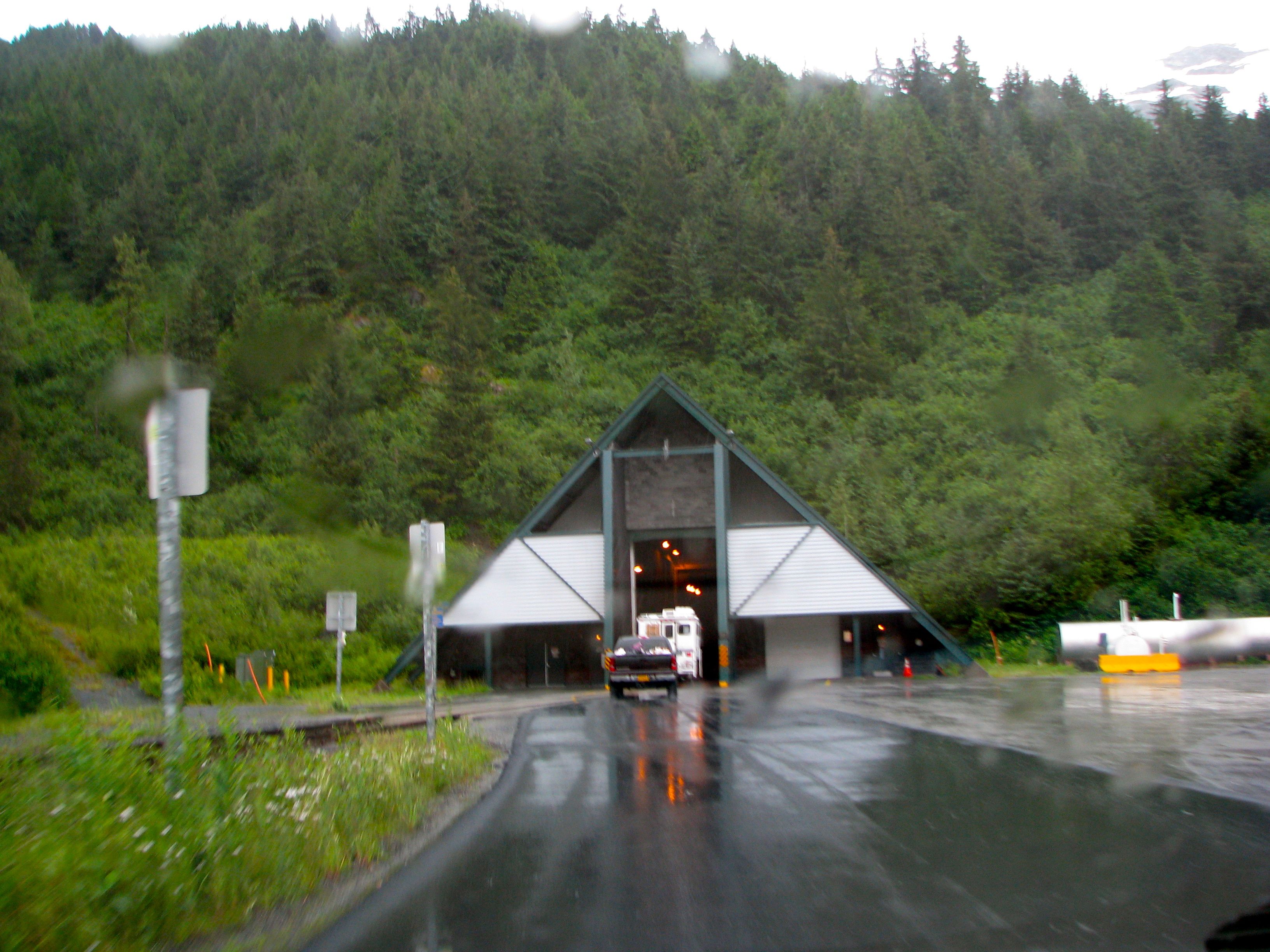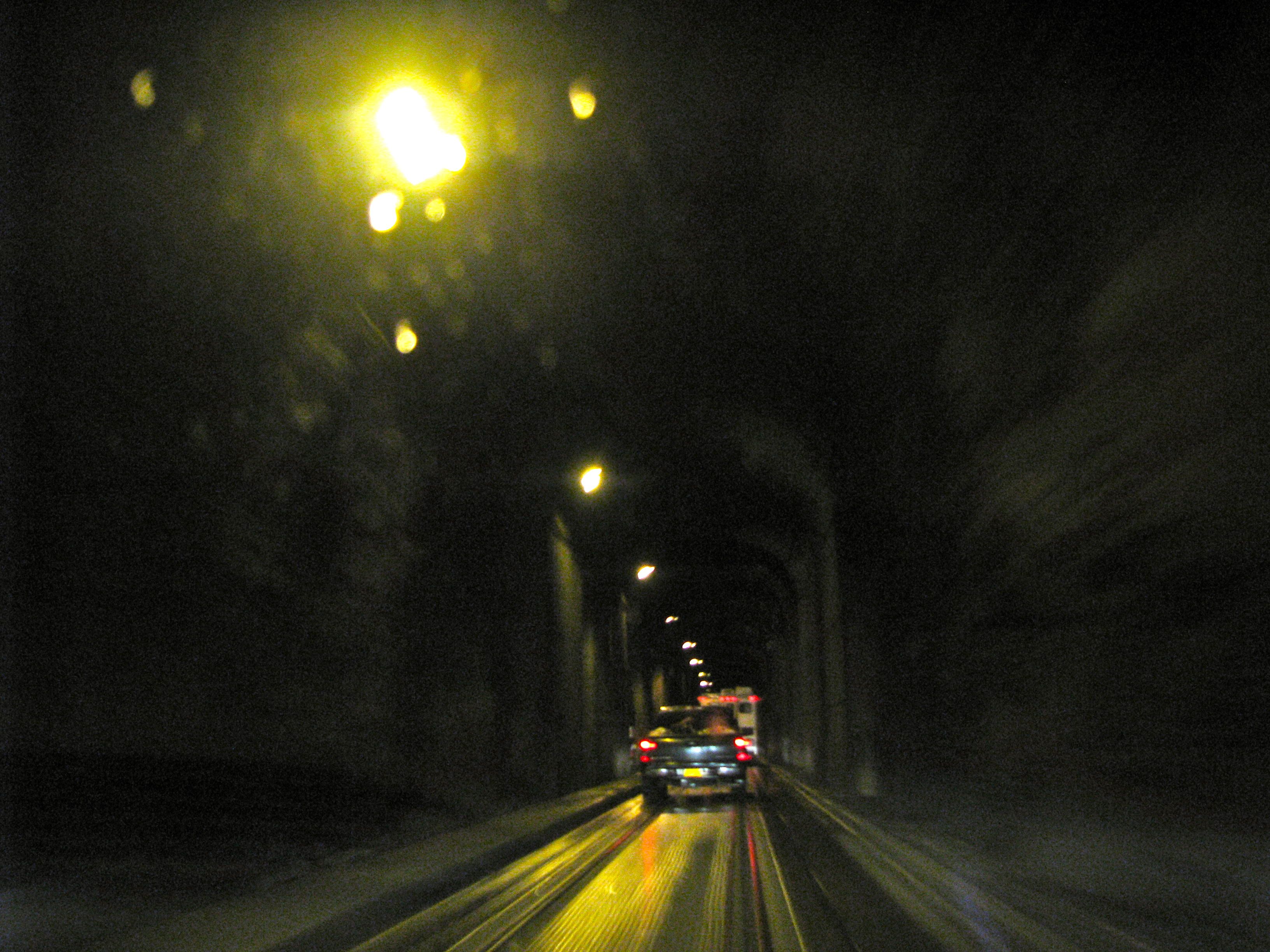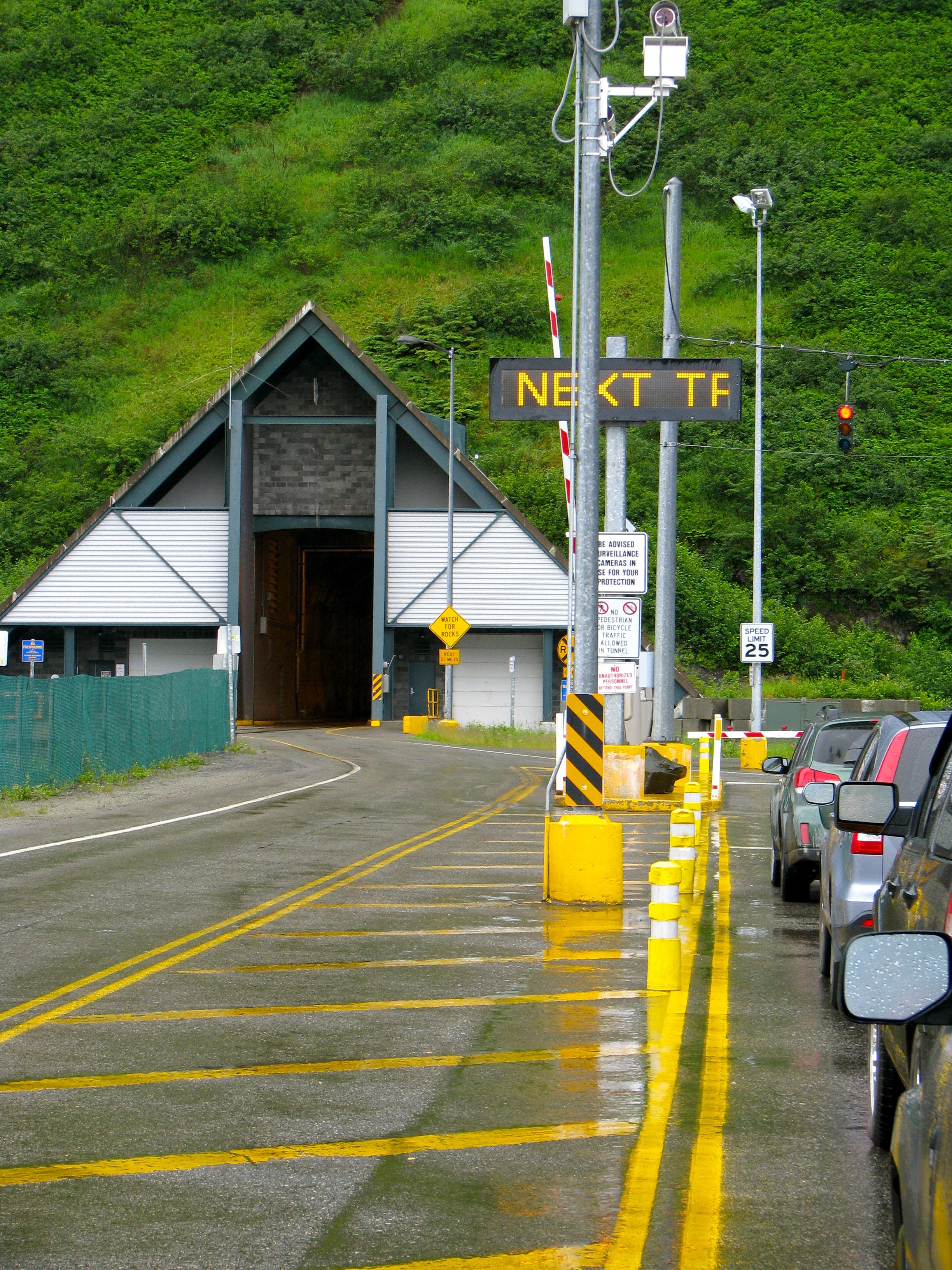Whittier, Alaska, USA (July 2010)
I’d long wanted to traverse the Anton Anderson Memorial Tunnel heading to Whittier, Alaska and the Prince William Sound (map). The tiny town of Whittier holds a couple hundred people where nearly the entire population lives in a single building. You might wonder why the government built a tunnel nearly two and half miles long through solid stone for so few people. The situation actually arose from an historical necessity.
World War 2
Alaska controlled access to north Pacific shipping lanes. However, Japanese forces captured two of the Aleutian Islands during the early days of World War II, requiring the U.S. army to defeat them on the battlefield. Arming and securing Alaska became a national security issue as a result.
Only a handful of ice-free harbors existed along Prince William Sound including Whittier, just a small fishing village. The U.S. Army thought of Whittier as an optimal staging point for bringing troops and material into Alaska. This could provide a direct path to Anchorage, only seventy five miles away, and by extension to the Alaskan interior. There was only one problem, and it was a big one: Whittier sat on a coastal shelf completely hemmed-in by 3,684 foot Maynard Mountain. They could only connect Whittier to the rest of Alaska by air or sea. No road could ever climb across the glacier-encrusted terrain.
The U.S. Army built a tunnel instead, not so much for the residents of Whittier but in support of the war effort. They designed it solely as a train tunnel, a route both shorter and less difficult than the route heading up the Kenai Peninsula from Seward. The military does not need the tunnel anymore, and in fact they left Whittier a half-century ago, but it continues to benefit the residents of this otherwise isolated town.
Preparations

We approached from the west, heading from the Seward Highway (route). We traveled a few miles after turning onto Portage Glacier Road and went through an initial tunnel, the 400 foot Portage Lake Tunnel, which had sufficient width to allow vehicles to pass in both directions unimpeded. Not much later we spotted a mountainous ridge looming on the horizon, then turned a curve and noticed the toll plaza and staging area leading to the Bear Valley Portal Building, an A-Frame structure dug into the hillside. We’d checked the schedule beforehand and had to wait only a few minutes before the next release.
Release?
Right. Notice the width of the tunnel. Traffic can only move in one direction at a time. Vehicles travel in a line towards Whittier, the tunnel clears, then traffic can proceed back towards Anchorage or the Kenai. If that weren’t enough, consider that this was designed as a train tunnel and it continues to function as a train tunnel today. Trains travel in both directions and this odd arrangement also has to be figured into the equation along with every manner of cars, tractor trailers, tourist buses and oversized Recreational Vehicles.
Officials use the staging area to separate the various types of vehicles. Each type follows separate rules for spacing and following distances inside the tunnel. Computer systems choreography the entire array of possibilities in a way that avoids accidents and keeps everyone safe.
Inside the Tunnel

It feels strange driving through the tunnel because of the embedded train tracks within the road surface. It’s part road, it’s part rail bed, and it’s all rolled into one. This arrangement has only been in place since 2000 after two years of retrofitting. Construction engineers quickly determined that it wouldn’t be feasible to widen the existing tunnel to make room for trains as well as motor vehicles moving in both directions. They came up with their innovative approach, a redesign of a tunnel stretching 13,300 feet, the longest combined railway and highway tunnel in North America.
It’s quite safe but it’s also rather narrow. Transit speeds are kept low and distances between vehicles are closely monitored. It not only prevents accidents but would also lessen the severity of accidents should they happen. It decreases the possibility of chain reaction wrecks and damaging fire. In the event something like this ever happened though, there are a series of several pull-outs and safe rooms along the tunnel route where people could seek shelter and avoid being trapped.
The Return Trip

It’s much the same story on the return route. We were delayed momentarily but we also got to see an Alaska Railroad passenger train leaving Whittier on the way to Anchorage. That was one of the highlights of the drive which we were able to capture on video (above). It felt really strange driving through right after the train cleared the tunnel, with the smell of diesel smoke still hanging in the air.
The Whittier Portal has a similar A-Frame shape as the Portage Lake side. The design was chosen specifically to survive major avalanches which is certainly a possibility in this snowy, mountainous area. Look under the roofline directly left and right of the tunnel entrance. These are storage areas including room for a fire truck. Directly above that are large exhaust fans that keep fresh air moving into the tunnel at all times while venting noxious fumes emitted by vehicles moving through the tunnel. Every space associated with the tunnel has a purpose.
This is an amazing route for rail fans or those who enjoy engineering marvels or interesting road trips.

Leave a Reply